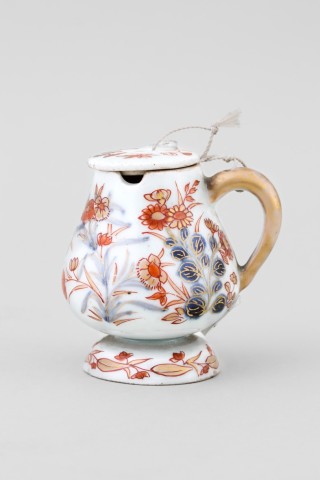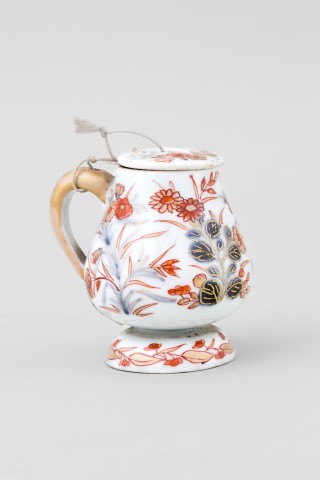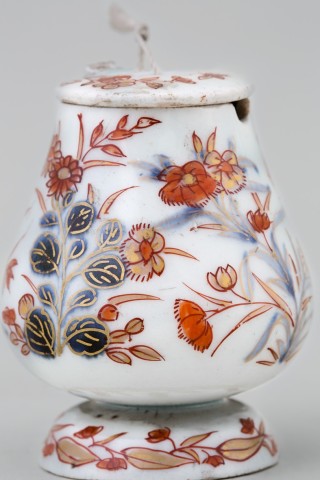AX77
Further images
Of baluster shape, waisted foot with straight sides, wide mouth, a flat cover with a central opening, the curved handled pierced, painted in shades of underglaze blue and overglaze iron red and gold enamels with sprays of flowers on the body, a thin spray of flower-heads and a small butterfly on the cover and a continuous band of small flower-heads and leaves around the foot, the handle painted in gold, the base glazed.
Literature
For a discussion on mustard pots and an example of a Japanese mustard pot in blue and white see Christiaan J.A. Jörg, 'Fine and Curious - Japanese Export Porcelain in Dutch Collections', Hotei Publishing, 2003, p. 162, pl. 184, from where we quote; "Mustard pots were among the first objects made for export and already figure in the shipping list of 1659. They are also mentioned under the 'new kinds' of porcelain ordered by Wagenaer to serve as models (see cat. 173). Mustard was extremely popular in The Netherlands where it was used to improve the taste of food and was made locally. It was not well homogenized yet, and had to be stirred before use. Small (wooden) spoons came with the pots, which consequently have either a round opening in the cover (as here) or an opening in the mouth rim. The shape is derived from a Dutch model. A similar example is in the Royal Danish Collection, Copenhagen, and was already documented in the inventory of 1690."






